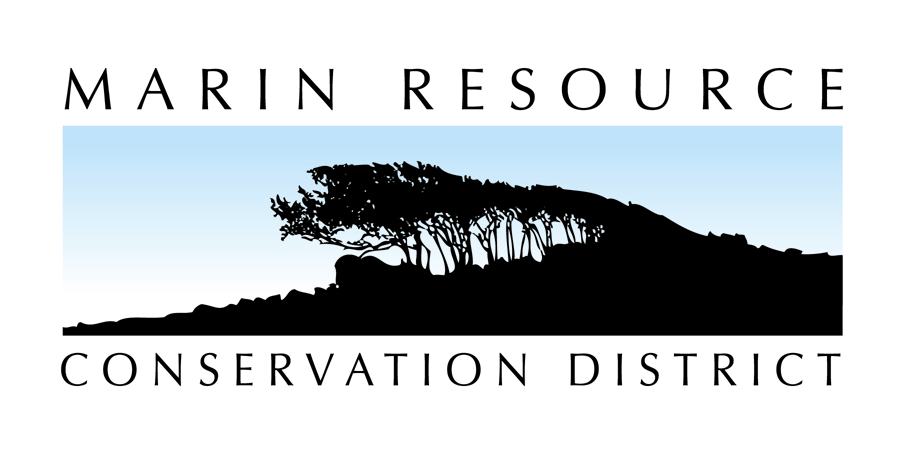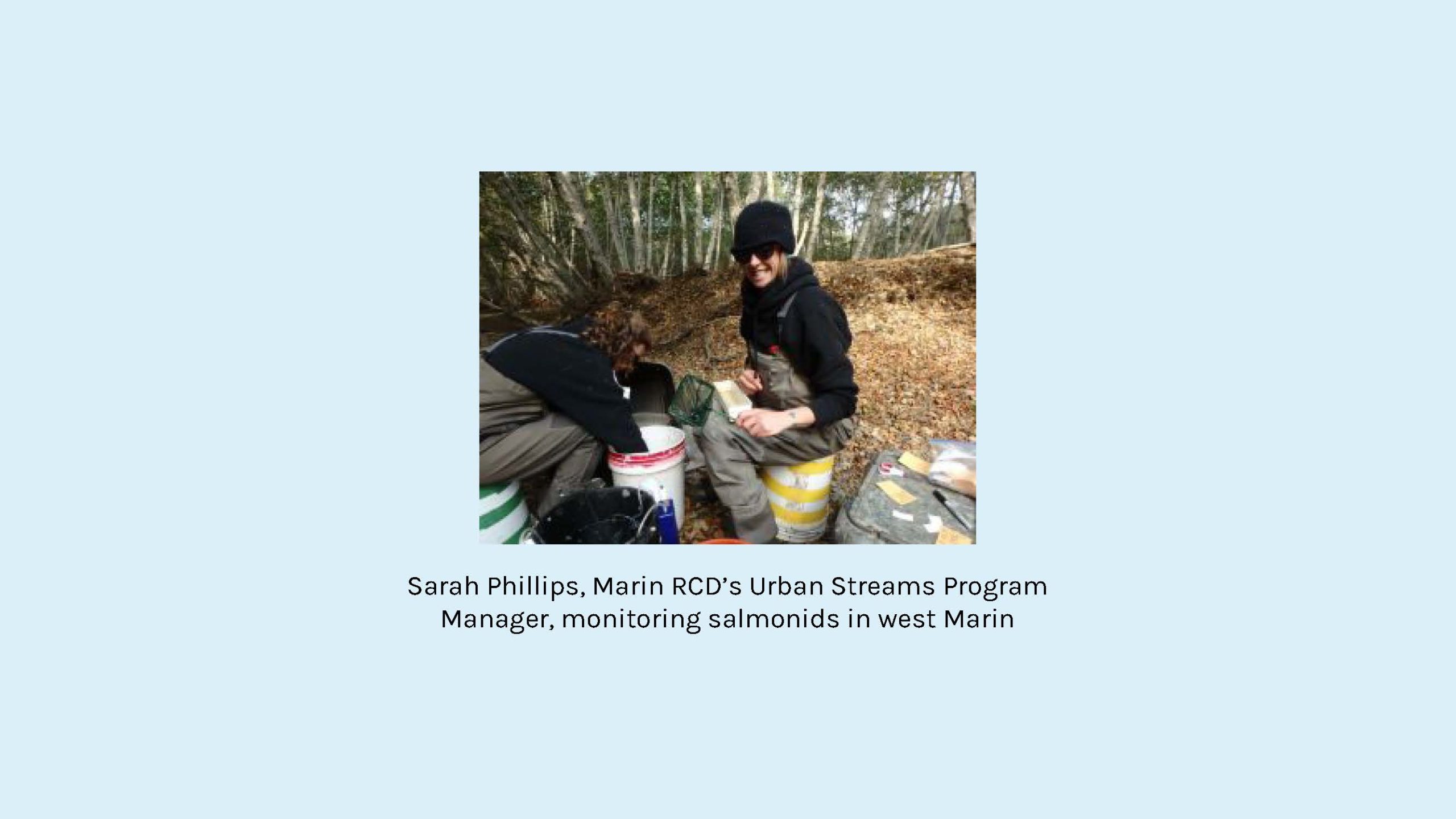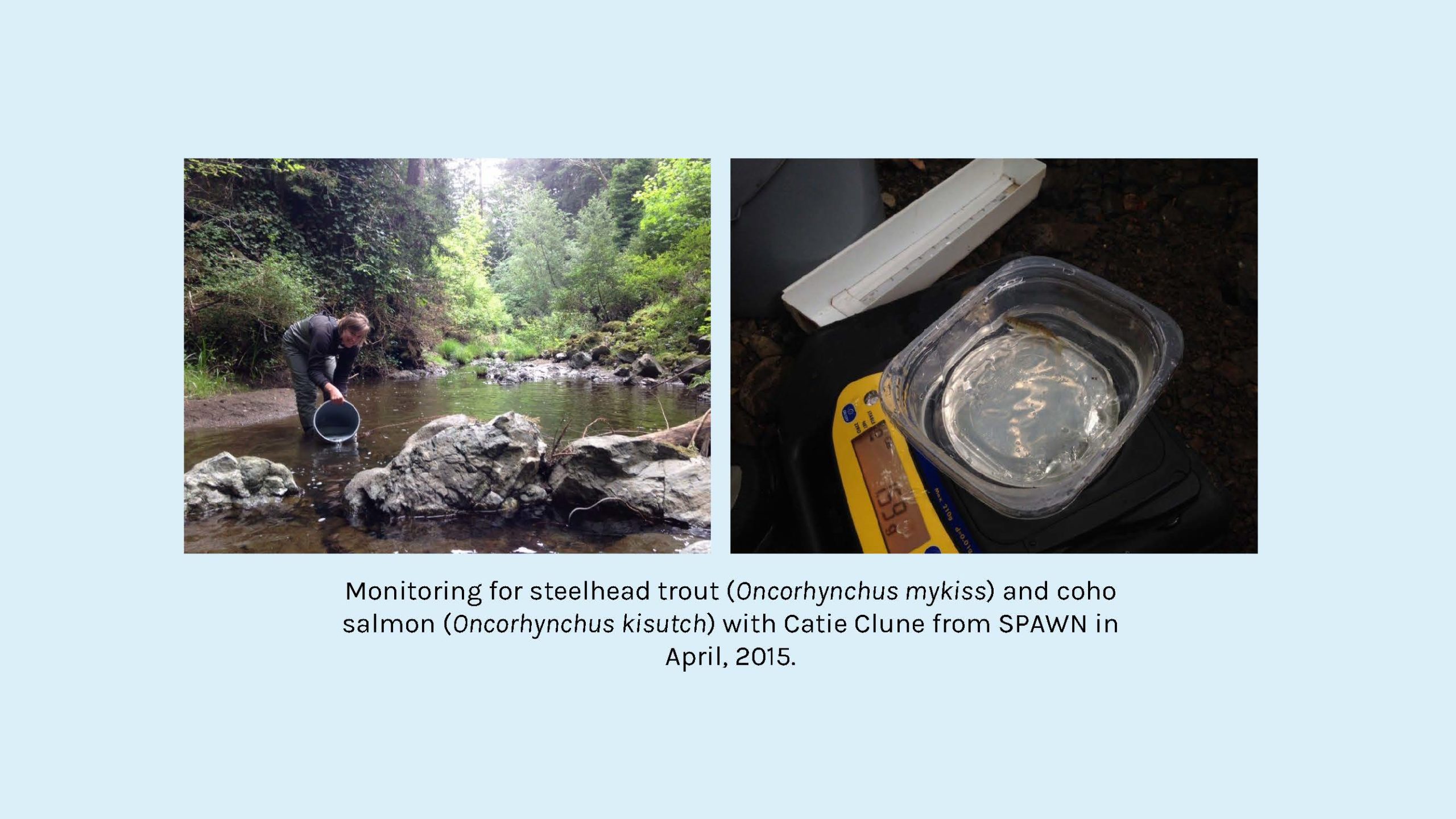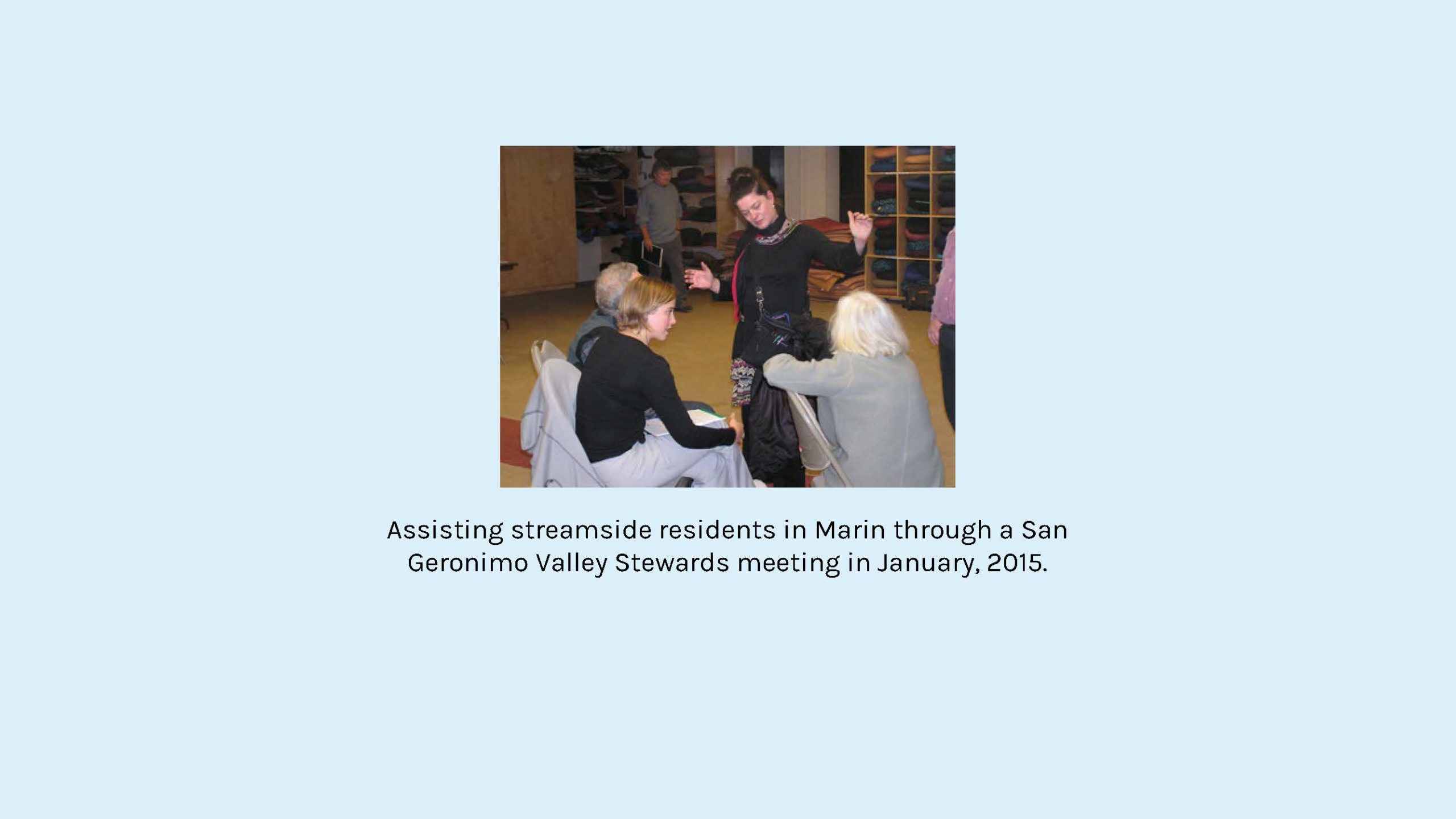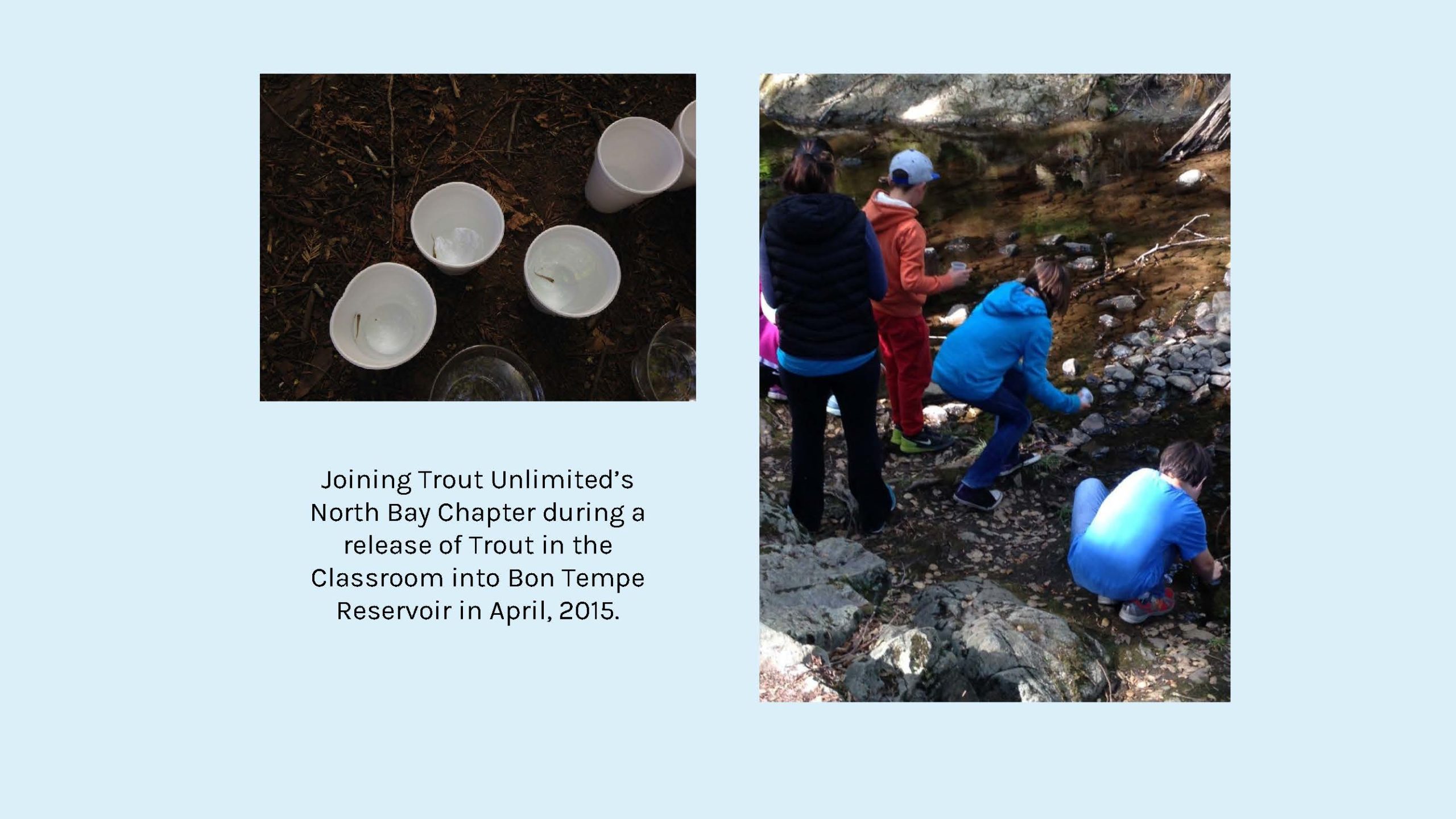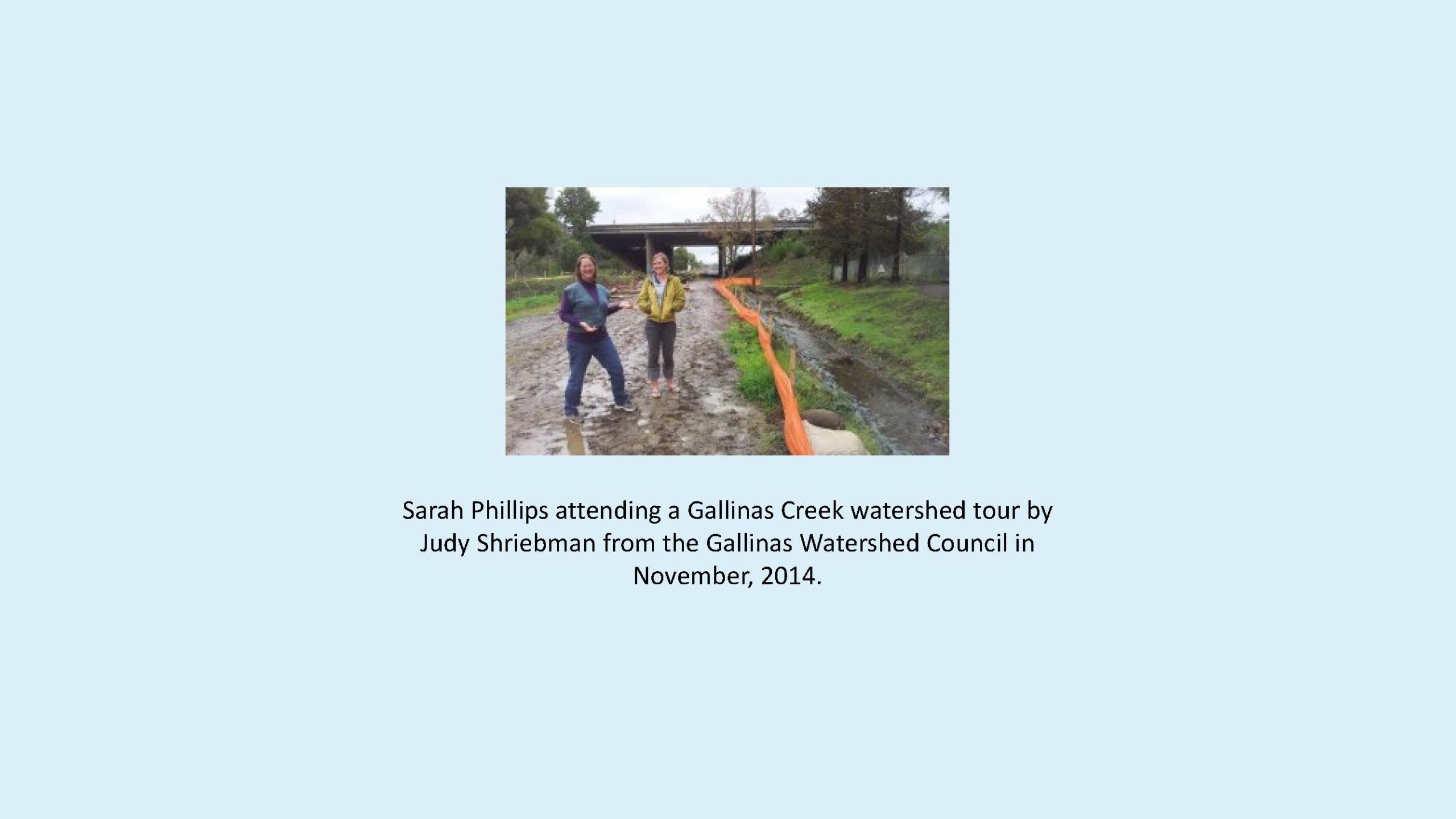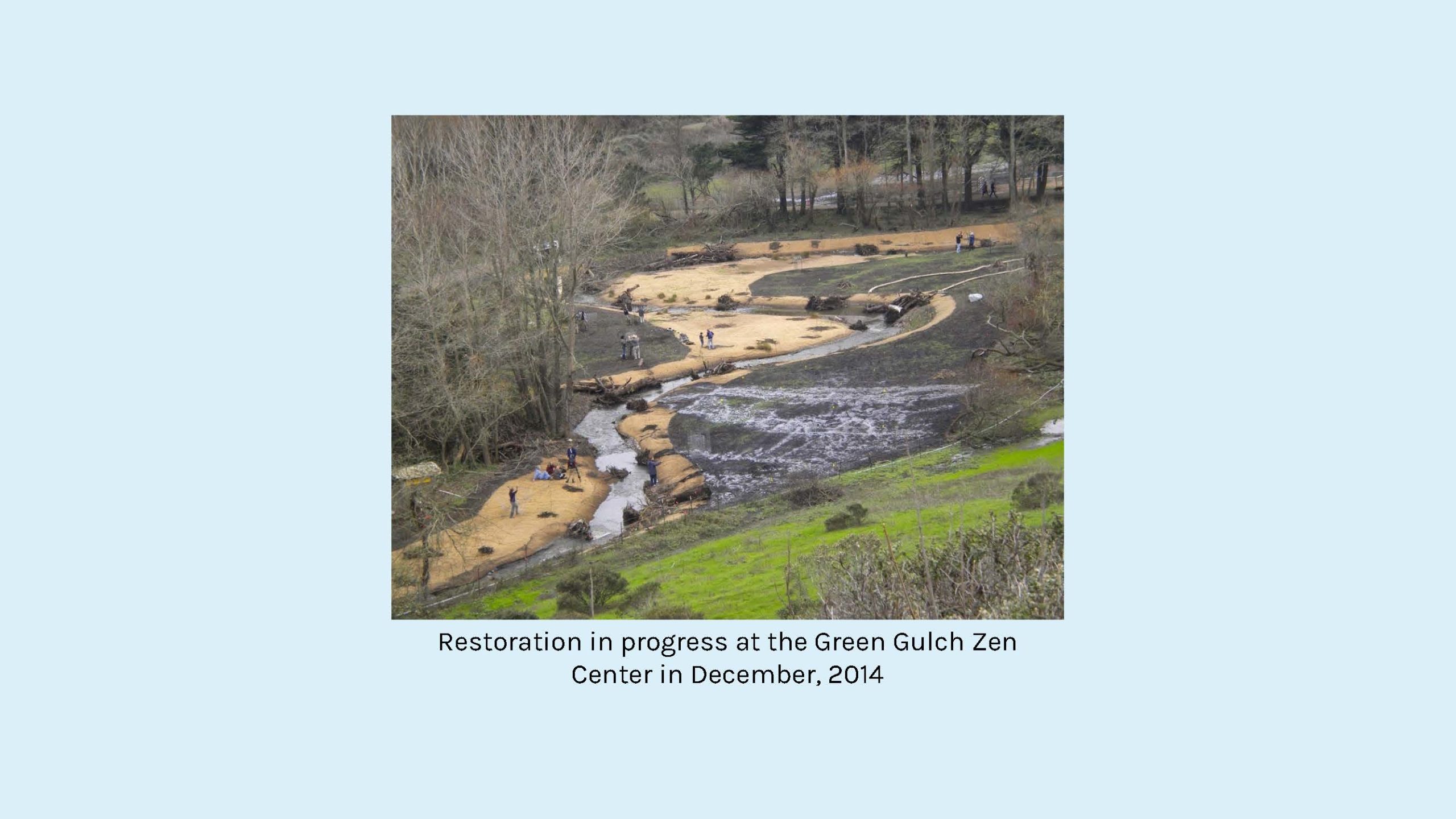Urban Streams Coordination (USC) Program
The Urban Streams Coordination (USC) program was created as a result of the Stream Conservation Area Ordinance. The USC program provides support and assistance to residents that live along Marin County’s creeks (in the unincorporated areas of Marin County) through educational workshops, presentations, watershed tours and site visits that can result in targeted restoration actions. The program provides coordination with County departments; Marin County Stormwater Pollution Prevention Program ( MCSTOPPP), Marin Watershed Program, Community Development Agency, Department of Public Works in addition to the various watershed and neighborhood organizations and associations. The program provides permitting guidance to property owners, who are pursuing projects that include development and/or restoration along the creeks of Marin, by collaborating with local, state and federal regulatory agencies. The USC program aims to facilitate communication among all interested parties invested in the urban streams of Marin.
When Feasible, Leave Wood In the Creeks, Please!
Keeping Wood in the Creek…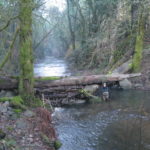
Why? Any strong storm can bring down trees, but after years of drought, we are seeing an especially large number of trees come down. It’s important to know that when trees fall into creeks, they become part of the creek channel in the eyes of the Department of Fish and Wildlife. Fallen trees, as they sit, tumble and turn within the creek, are nature’s creek-architects: they shape the creek’s bed and banks, the way the creek meanders, and how sediment and floating wood debris within the creek move or accumulate; fallen wood also becomes home and shelter to a variety of aquatic wildlife, and in particular, salmon and steelhead. Santa Cruz RCD has created the StreamWood Brochure, a great resource on leaving wood in creeks, check it out!
What About Removal? Large wood is critical to the health of a creek for these reasons, but in some cases, it can conflict with the needs of the creekside landowner. Large fallen wood can sometimes divert the stream’s energy toward a bank, posing a threat of bank failure or other damage, or may have caused serious damage at the time it fell. These might be reasons why a landowner would feel the need to remove fallen wood that lies within a creek channel.
Permitting: If you need to remove wood from a stream, first you must notify the Department of Fish and Wildlife by filing a Lake or Streambed Alteration (1600 LSA) permit. As mentioned above, wood changes the creek’s bed and banks when it falls in; by removing it, a landowner is also causing change. The Marin RCD can point landowners toward the 1600 LSA Agreement website to set up an account and give guidance on how to notify the Department.
For landowners who encounter an emergency and need to remove fallen wood, they have 14 days after the removal to file an Emergency 1600 LSA permit notification. Please read the instructions for this permit closely to be sure your situation qualifies as an emergency.
Before You Remove Wood…
Take note of any large wood situated in your creek. Some pieces of wood are part of structures that have been installed and secured to improve fish habitat by a local agency/organization. If you are removing fallen wood, please do not remove these structures or other pieces of wood that pose no threat to property. Above is a photo of one of Marin Water District’s many large wood debris installation projects in the Lagunitas Creek watershed. Learn more about the habitat and watershed benefits of fallen wood in our creeks.
Learn more about why adding large wood debris is good for fishery habitat enhancement:
Learn more about why rivers move:
Example Projects:
If you would like to participate in the USC program please contact the Marin RCD at (415) 663-1170 ext. 302, or send us an email.
Opportunity for free and safe disposal of green waste yard materials such as branches, grass and light brush. No building materials. West Marin Compost is located at 5575 Nicasio Valley Road and can be reached by phone at (415) 662-9849.
Drop-off facilities provided through Marin County’s Department of Public Works for residents of Marin County that may bring paint, adhesives, motor oil, pesticides, household batteries, light bulbs, latex paint, computer monitors, televisions, household electronics, and bleach cleaners to the facility free of charge.
